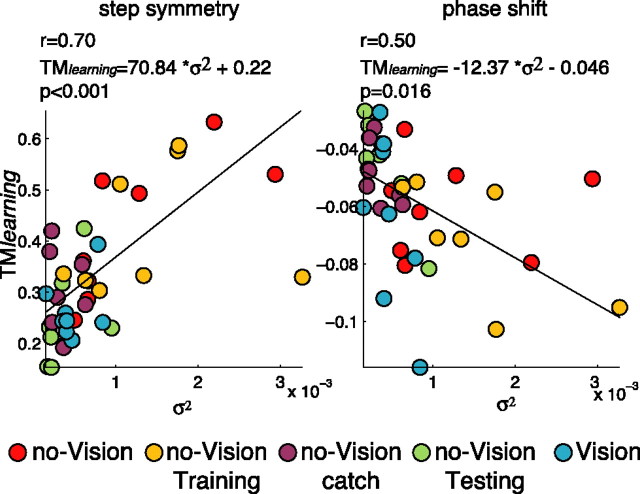Figure 6.
Scatter plots showing the relationship between variability in stepping and TMlearning. Colors indicate the different sensory conditions. Multiple regression was used to explore the effects of variability, training, and testing sensory conditions (i.e., 3 regressors) on adaptation magnitude (TMlearning). Regression equations with significant factors are included in both panels. Variability in behavior was the only significant factor that predicted the magnitude of spatial and temporal adaptation effects. The magnitude of adaptation was positively related to the subjects' behavior variability: the more variable were subjects during adaptation, the more learning (i.e., bigger aftereffects during catch trial).

